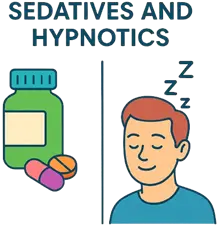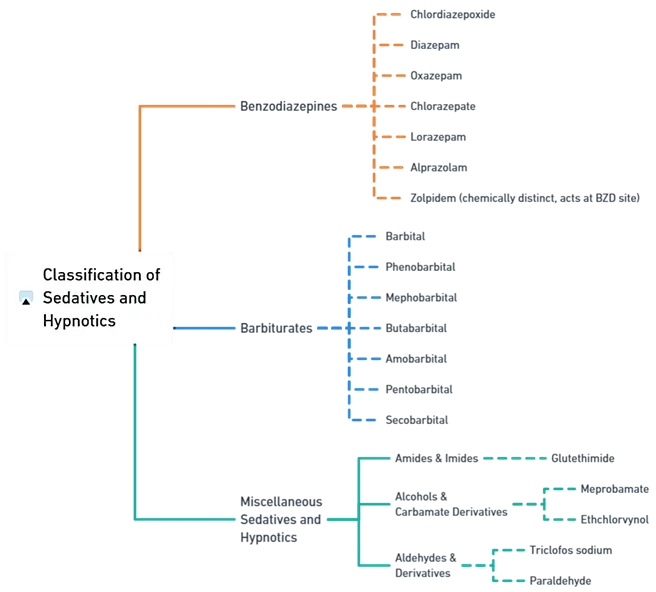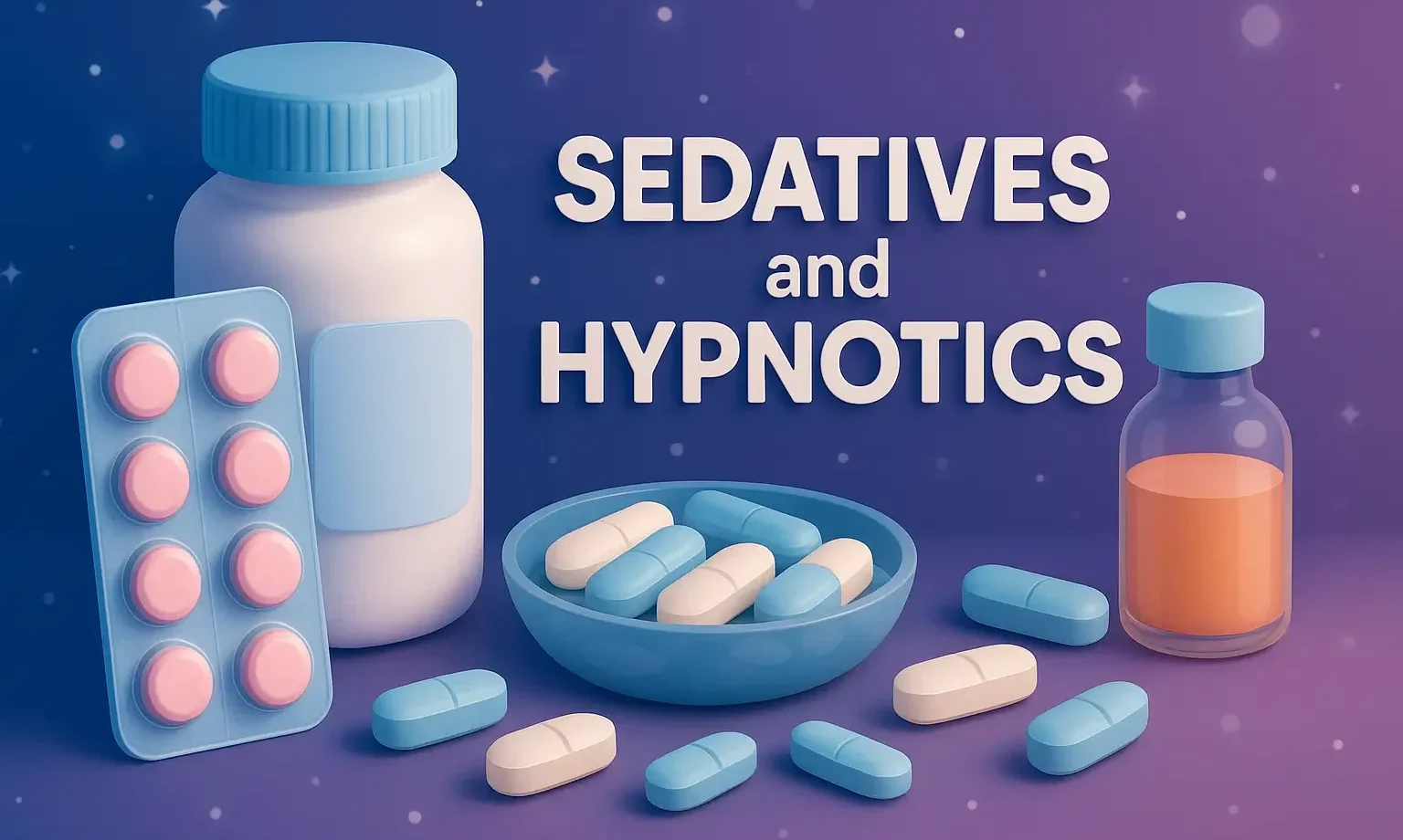Definition of Sedatives and Hypnotics
- Sedatives and hypnotics are central nervous system (CNS) depressants that reduce anxiety (anxiolytic effect), induce sedation (calming effect), or promote sleep (hypnotic effect).
- The same compound may act as a sedative or hypnotic depending on the dose and pharmacokinetics.

Classification

1. Benzodiazepines
- Mechanism (brief)
- Enhance the effect of GABA (gamma-aminobutyric acid) at the GABA-A receptor, increasing the frequency of chloride channel opening, leading to CNS depression.
- Examples of Benzodiazepines:
- Chlordiazepoxide
- Diazepam
- Oxazepam
- Chlorazepate
- Lorazepam
- Alprazolam
- Zolpidem (Note: Chemically distinct but acts at benzodiazepine binding site – often grouped with BZDs for pharmacology)
2. Barbiturates
- Mechanism (brief)
- Act on GABA-A receptors to prolong the duration of chloride channel opening.
- At higher doses, they can mimic GABA, leading to more profound CNS depression.
- Examples of Barbiturates:
3. Miscellaneous Sedatives and Hypnotics
- Amides & Imides
- Structural similarity to barbiturates.
- Act as CNS depressants.
- Example:
- Alcohols & Carbamate Derivatives
- Possess sedative-hypnotic
- Carbamate derivatives act as CNS depressants similar to older sedatives.
- Examples:
- Aldehydes & Their Derivatives
- Used for short-term sedation.
- Work by depressing CNS activity, though mechanisms can vary.
- Examples:
Classification of Sedatives and Hypnotics
| Class | Mechanism of Action | Examples | Key Notes / Uses |
| Benzodiazepines | Enhance GABA-A receptor activity → increase frequency of Cl⁻ channel opening → CNS depression | Chlordiazepoxide, Diazepam, Oxazepam, Chlorazepate, Lorazepam, Alprazolam, Zolpidem* | Anxiolytics, hypnotics, anticonvulsants, muscle relaxants. Zolpidem is non-BZD but binds same site. |
| Barbiturates | Enhance GABA-A activity → prolong Cl⁻ channel opening; at high doses, mimic GABA → profound CNS depression | Barbital, Phenobarbital, Mephobarbital, Amobarbital, Butabarbital, Pentobarbital, Secobarbital | Less safe than BZDs; used in epilepsy and anesthesia. Risk of dependence, overdose. |
| Amides & Imides | Structurally similar to barbiturates; act as CNS depressants | Glutethimide | Formerly used as sedative; replaced due to abuse potential and safer alternatives. |
| Alcohols & Carbamate Derivatives | Depress CNS via uncertain mechanisms; carbamates similar to older sedatives | Meprobamate, Ethchlorvynol | Meprobamate has anxiolytic properties; now rarely used due to safety concerns. |
| Aldehydes & Derivatives | Depress CNS activity; exact mechanism varies | Triclofos sodium, Paraldehyde | Used for short-term sedation; paraldehyde historically used in seizures and delirium. |

